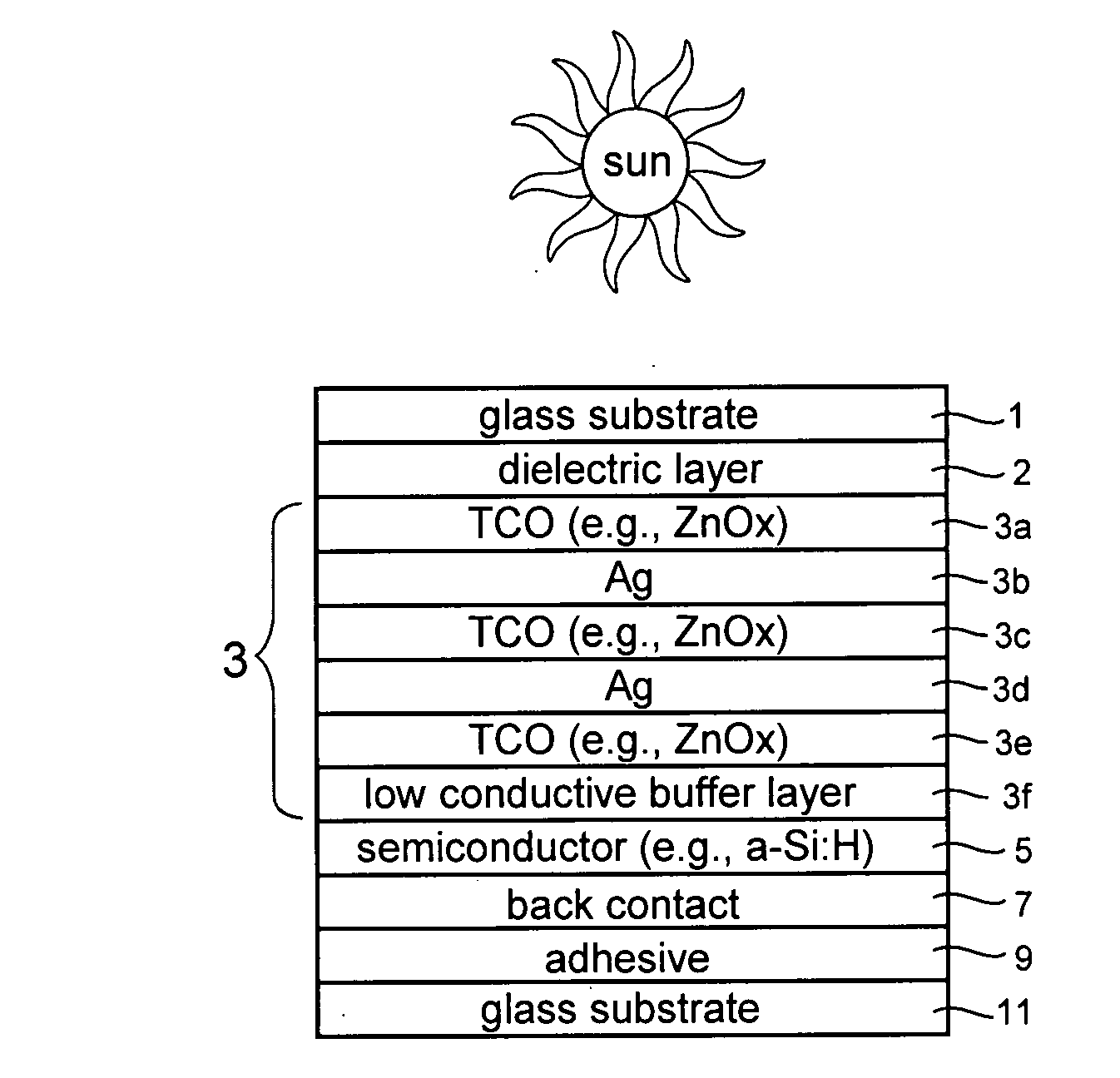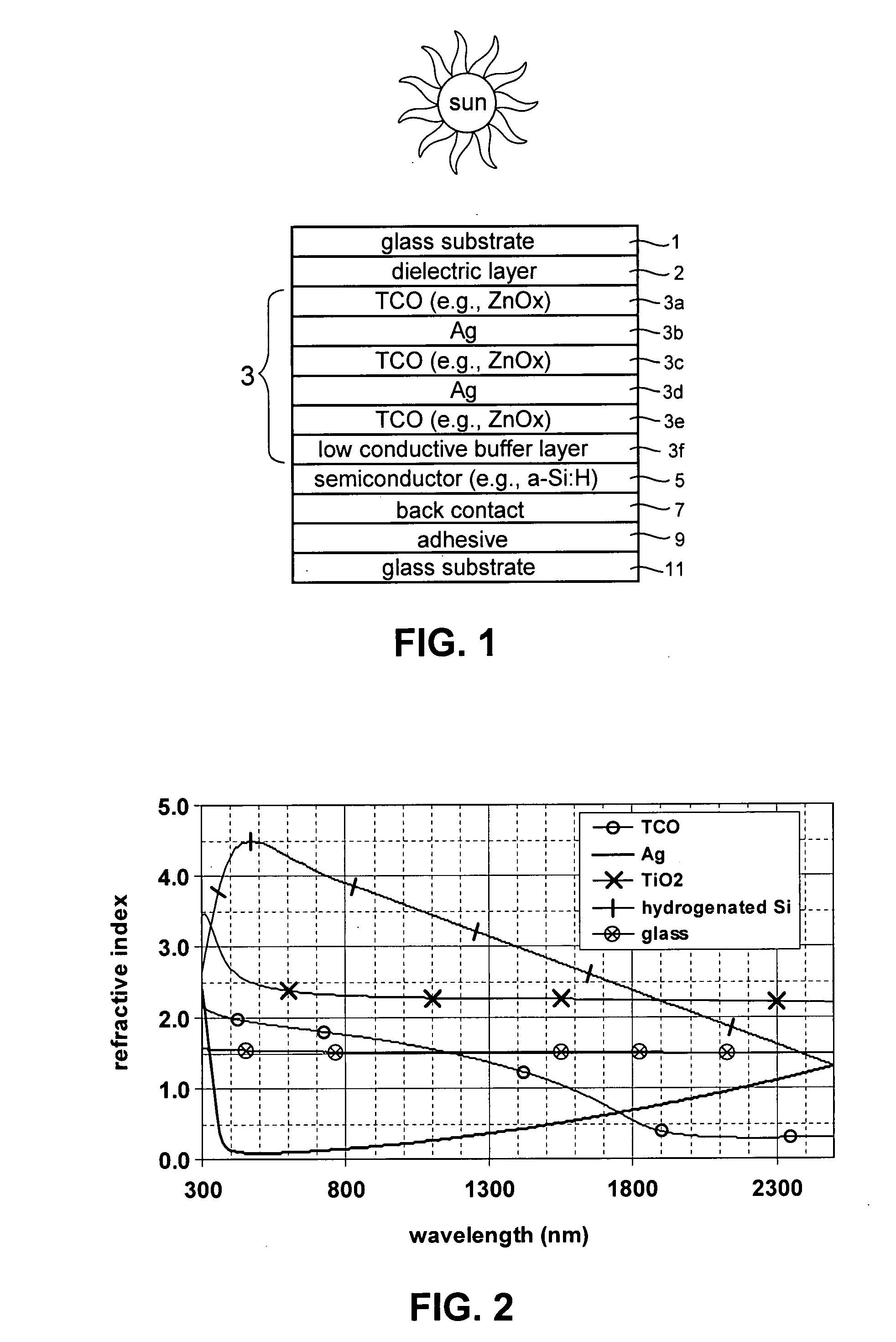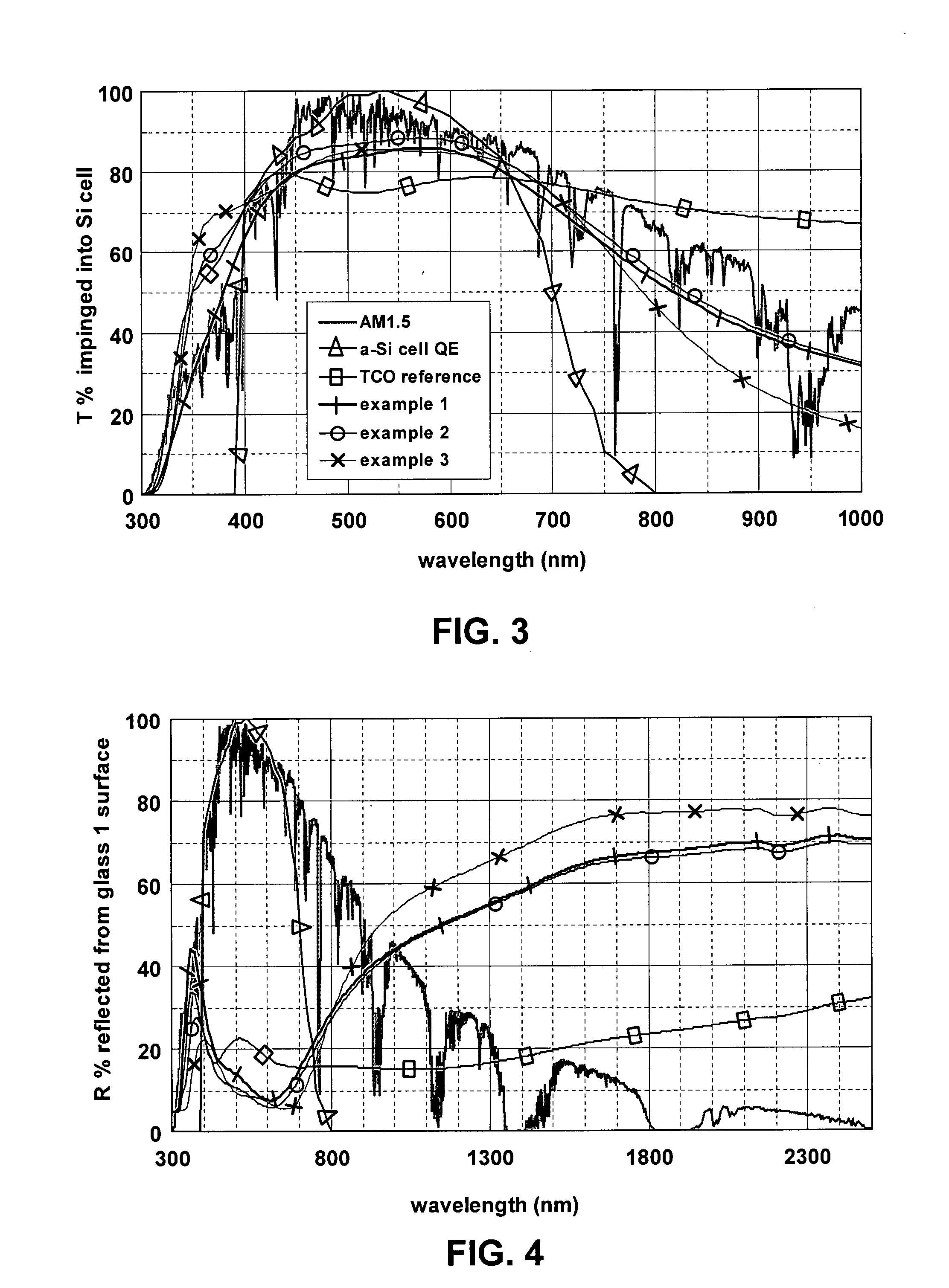Front electrode for use in photovoltaic device and method of making same
a photovoltaic device and front electrode technology, applied in the direction of photovoltaic devices, electrical devices, semiconductor devices, etc., can solve the problems of reducing the output power of the photovoltaic device, reducing the conductivity of the front electrode, and only having such a conventional tco front electrode, so as to reduce the visible light reflection, increase the ir reflection capability, and reduce the effect of tco drop
- Summary
- Abstract
- Description
- Claims
- Application Information
AI Technical Summary
Benefits of technology
Problems solved by technology
Method used
Image
Examples
example 1
[0037]Example 1 shown in FIG. 5 and charted in FIGS. 3-4 was made up of 3 mm thick glass substrate 1, 16 nm thick TiO2 dielectric layer 2, 10 nm thick zinc oxide TCO doped with Al 3a, 8 nm thick Ag IR reflecting layer 3b, and 115 nm thick zinc oxide TCO doped with Al 3e. Layers 3c, 3d and 3f were not present in Example 2 shown in FIG. 6 and charted in FIGS. 3-4 was made up of 3 mm thick glass substrate 1, 16 nm thick TiO2 dielectric layer 2, 10 nm thick zinc oxide TCO doped with Al 3a, 8 nm thick Ag IR reflecting layer 3b, 100 nm thick zinc oxide TCO doped with Al 3e, and 20 nm thick titanium suboxide layer 3f. Example 3 shown in FIG. 7 and charted in FIGS. 3-4 was made up of 3 mm thick glass substrate 1, 45 nm thick dielectric layer 2, 10 nm thick zinc oxide TCO doped with Al 3a, 5 nm thick Ag IR reflecting layer 3b, 75 nm thick zinc oxide TCO doped with Al 3c, 7 nm thick Ag IR reflecting layer 3d, 95 nm thick zinc oxide TCO doped with Al 3e, and 20 nm thick titanium suboxide laye...
PUM
| Property | Measurement | Unit |
|---|---|---|
| refractive index | aaaaa | aaaaa |
| refractive index | aaaaa | aaaaa |
| refractive index | aaaaa | aaaaa |
Abstract
Description
Claims
Application Information
 Login to View More
Login to View More - R&D
- Intellectual Property
- Life Sciences
- Materials
- Tech Scout
- Unparalleled Data Quality
- Higher Quality Content
- 60% Fewer Hallucinations
Browse by: Latest US Patents, China's latest patents, Technical Efficacy Thesaurus, Application Domain, Technology Topic, Popular Technical Reports.
© 2025 PatSnap. All rights reserved.Legal|Privacy policy|Modern Slavery Act Transparency Statement|Sitemap|About US| Contact US: help@patsnap.com



